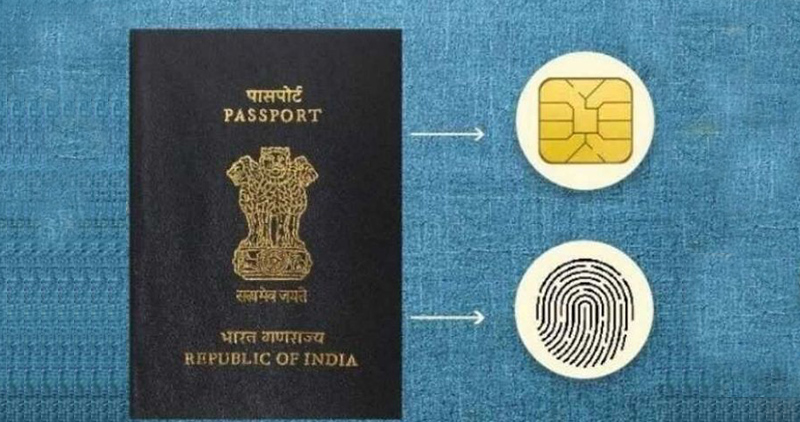Indians to get chip-enabled e-passports in next 2 months: These will have 41 advanced features; Immigration process will be quick in 140 countries.
The common citizen of the country can get the first e-passport in the next two months. All the technical tests of these chip-enabled passports are almost complete. Indian Security Press Nashik is printing 70 lakh e-passport blank booklets in the first year. This press has got an order to print 4.5 crore chip passports.
With the new passport with 41 advanced features, the immigration process will be completed within minutes at airports in 140 countries that comply with International Civil Aviation Organization (ICAO) standards. In appearance it will be similar to the present passport booklet. Only on one of the pages in the middle of the booklet will there be a radio frequency identification chip and a small foldable antenna at the end.
The chip will have our biometric details and all those things which are already there in the booklet. The scheme called Passport Service Program 2.0 (PSP) is yet to be launched. The scheme will be implemented in a phased manner so that there is no rush at the centers for chipped passports. For this, passport centers are being technically upgraded.
Advantage: System will catch lookalike
According to sources in the Ministry of External Affairs, modern biometric systems will be installed at the airport for e-passports. In this, the facial image stored in the passport and the live image during immigration will be matched in seconds. If someone has come impersonating, the system will catch him immediately. At present, many times the old photo and live image in the booklet passport do not match.
Passport testing continues with foreign chip reader
The information entered in the passport booklet and the chip information have been adapted from the ICAO. Indian e-passport trials are underway with chip readers from different countries. The chip should not be read, the digital signature should be matched immediately, and the chip data should be clearly displayed on the receiver computer, so the technical test is almost done.

